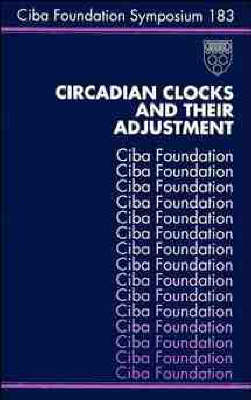Circadian Clocks and Their Adjustment Chairman: J. M. Waterhouse 1995 Organisms ranging from unicellular algae to humans display biological rhythms reflecting their ability at the molecular level to keep track of time. In humans, the circadian clock signals when to sleep and wake, adjusts body temperature and modifies cardiovascular, renal, digestive and other functions, correspondingly directing the production of certain hormones, of which the pineal hormone melatonin is the best known. Research on a range of organisms is revealing an increasingly coherent picture of the molecular and cellular basis of biological clocks and the internal pacemakers that generate the rhythms and are synchronized with time cues in the environment such as the light - dark cycle, physical activity, drugs, diet and social factors. This book covers recent advances in all major aspects of research on circadian clocks. The genetic and molecular basis of the clock in Neurospora crassa is described and the molecular background to recent work showing that individual isolated neurons from Bulla gouldiana can act as pacemakers is investigated.
The organization and operation of circadian pacemakers in vertebrates is dealt with in the hamster and the rat; the results and implications of studies of the neuronal pathways involved in the circadian timing system, the intrinsic rhythms generated by the suprachiasmatic nuclei and cross-genotype transplantation of the suprachiasmatic nuclei in the tau period mutant hamster are considered. A discussion of current knowledge of the anatomical, genetic and neurochemical pathways involved in photic and non-photic entrainment in the hamster leads on to the changes that occur with ageing. Aspects of the book with direct relevance to humans include chapters on the importance of circadian time in clinical pharmacology and on the adjustment of the pacemaker by light and melatonin treatment in disorders such as shift-work dyssomnia and jet lag. Related Ciba Foundation Symposia: No. 168 Functional anatomy of the neuroendocrine hypothalamus Chairman: S. Lightman 1992 ISBN 0 471 93440 2 No. 170 Regulation of the eukaryotic cell cycle Chairman: T. Hunter 1992 ISBN 0 471 93446 1
- ISBN10 0471943053
- ISBN13 9780471943051
- Publish Date 20 February 1995
- Publish Status Out of Print
- Out of Print 18 February 2022
- Publish Country GB
- Publisher John Wiley and Sons Ltd
- Imprint John Wiley & Sons Ltd
- Format Hardcover
- Pages 348
- Language English
